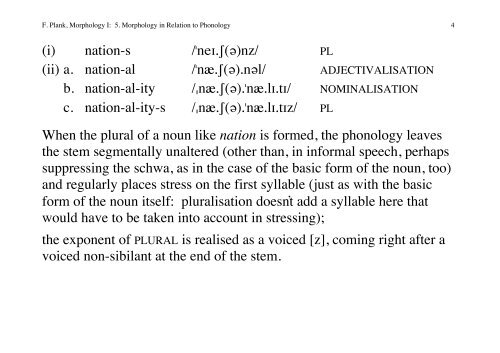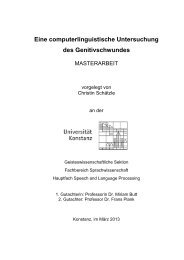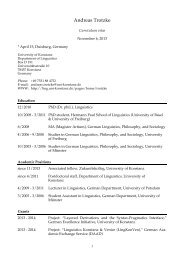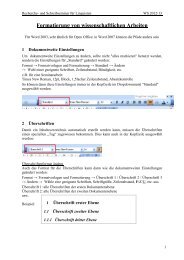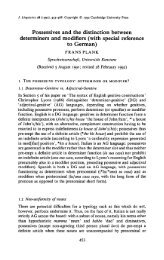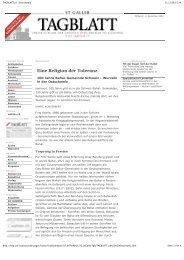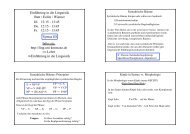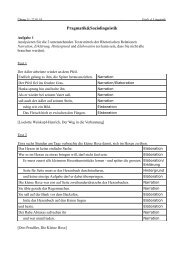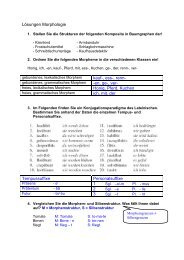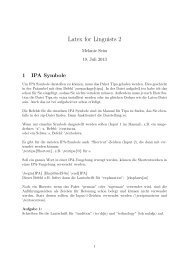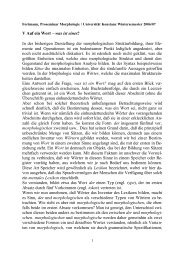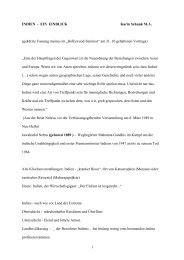5. Morphology in Relation to Phonology
5. Morphology in Relation to Phonology
5. Morphology in Relation to Phonology
You also want an ePaper? Increase the reach of your titles
YUMPU automatically turns print PDFs into web optimized ePapers that Google loves.
F. Plank, <strong>Morphology</strong> I: <strong>5.</strong> <strong>Morphology</strong> <strong>in</strong> <strong>Relation</strong> <strong>to</strong> <strong>Phonology</strong> 4<br />
(i) nation-s /"neI.S(E)nz/ PL<br />
(ii) a. nation-al /"nœ.S(E).nEl/ ADJECTIVALISATION<br />
b. nation-al-ity /ˌnœ.S(E)."nœ.lI.tI/ NOMINALISATION<br />
c. nation-al-ity-s /ˌnœ.S(E)."nœ.lI.tIz/ PL<br />
When the plural of a noun like nation is formed, the phonology leaves<br />
the stem segmentally unaltered (other than, <strong>in</strong> <strong>in</strong>formal speech, perhaps<br />
suppress<strong>in</strong>g the schwa, as <strong>in</strong> the case of the basic form of the noun, <strong>to</strong>o)<br />
and regularly places stress on the first syllable (just as with the basic<br />
form of the noun itself: pluralisation doesn̓t add a syllable here that<br />
would have <strong>to</strong> be taken <strong>in</strong><strong>to</strong> account <strong>in</strong> stress<strong>in</strong>g);<br />
the exponent of PLURAL is realised as a voiced [z], com<strong>in</strong>g right after a<br />
voiced non-sibilant at the end of the stem.


